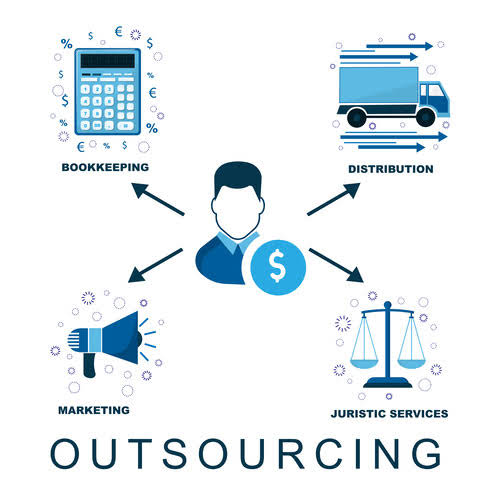Content

Accounting liquidity measures the ease with which an individual or company can meet their financial obligations with the liquid assets available to them—the ability to pay off debts as they come due. The current ratio is a rough indication of a firm’s ability to service its current obligations. Generally, the higher the current ratio, the greater the cushion between current obligations and a firm’s ability to pay them.

Although the fund financial statements were widely used, they did not allow financial statement users to get an overall view of a government’s finances for two reasons. First, the funds could not simply be added together, because doing so would double-count any financial activity occurring between funds. In other words, an amount owed from one fund to another would show up as both an asset and a liability, overstating both.
Is A Credit Card A Liquid Asset?
If there are enough buyers and sellers, you assume the market is liquid enough to trade. If not, you might have trouble getting in or out of positions easily and efficiently, so you stay away.
Like mutual funds, you generally receive proceeds from a sale the next business day. If liquidity ratios are too high, it might be time to take some of that cash and reinvest it in the business. That could mean updated equipment, training for staff, or investments in marketing and sales strategies. Without a liquid asset base, small businesses have their hands tied behind their backs. What could be accomplished easily may now require a trip to the bank or a time-consuming round of funding.
Why Should I Thoroughly Examine The Balance Sheet?
The company also has long-term debt and shareholder equity of $1,000. But those won’t be used in the liquidity ratios because they won’t come due in less than a year. A deferred expense or prepayment, prepaid expense , is an asset representing cash paid out to a counterpart for goods or services to be received in a later accounting period. For example, if a service contract is paid quarterly in advance, at the end of the first month of the period two months remain as a deferred expense. In the deferred expense, the early payment is accompanied by a related, recognized expense in the subsequent accounting period, and the same amount is deducted from the prepayment.
- The Generally Accepted Accounting Principles, or GAAP, are a specific set of guidelines created by the Financial Accounting Standards Board aimed at helping publicly traded companies create financial statements.
- This ratio measures the extent to which owner’s equity has been invested in plant and equipment .
- Order of permanence in accounting is the order of arranging assets in order of their permanency, i.e. assets that are most permanent are shown first and least permanent assets are shown last.
- On the other hand, inventory that you expect to sell in the near future would be considered a liquid asset.
- While each company is different, and their needs and objectives are different, a successful supply chain finance program can drive an improvement in those metrics.
The liquidity ratio of the business will portray to the creditors and investors how much financially strong the company is. Accounts Receivable – Amount due from the customers of the firm or organization for which goods/services have been provided, and the bill has been raised, but the amount is due to be collected.
Defining The Balance Sheet
Markets for real estate are usually far less liquid than stock markets. The liquidity of markets for other assets, such as derivatives, contracts, currencies, or commodities, often depends on their size, and how many open exchanges exist for them to be traded on. Market liquidity refers to the extent to which a market, such as a country’s stock market or a city’s real estate market, allows assets to be bought and sold at stable, transparent prices. In the example above, the market for refrigerators in exchange for rare books is so illiquid that, for all intents and purposes, it does not exist.
What does permanency mean?
Simply put, “permanency” means family. It means having positive, healthy, nurturing relationships with adults who provide emotional, financial, moral, educational, and other kinds of support as youth mature into adults.
Accounting is considered the language of business because its concepts are time-tested and standardized. Even if you do not utilize the services of a certified public accountant, you or your bookkeeper can adopt certain generally accepted accounting principles to develop financial statements. The strength of GAAP is the reliability of company data from one accounting period to another and the ability to compare the financial statements of different companies. Prepaid expenses—which represent advance payments made by a company for goods and services to be received in the future—are considered current assets. Although they cannot be converted into cash, they are the payments already made. Prepaid expenses could include payments to insurance companies or contractors. Current liabilities are a company’s short-term financial obligations that are due within one year or within a normal operating cycle.
What Are The Two Parts Of A Balance Sheet?
Knowing the liquidity of a company can help you understand if they can pay off their liabilities, including legal fees, loan payments and warranty policies. Save money without sacrificing features you need for your business. For example, a buyer could stockpile a reserve of goods to be used in case of a supply shortage, or expand its network of suppliers to reduce reliance on any given one. And the more suppliers a buyer uses, the fewer price efficiencies the buyer can achieve.
SEC Reforms More Money Market Fund Rules – The National Law Review
SEC Reforms More Money Market Fund Rules.
Posted: Sun, 19 Dec 2021 21:11:15 GMT [source]
Explore the history of GAAP and learn about the accounting factors that influence GAAP. D. Short-term investment in stocks is the most liquid of these five assets. A classified balance sheet is one where items are listed in order of liquidity. Under U.S. Generally Accepted Accounting Principles , a company may use a classified or non-classified balance sheet. order of liquidity Under International Financial Reporting Standards , a classified balance sheet must be used. Solvency refers to the organization’s ability to pay its long-term liabilities. Property, plant, and equipment normally include items such as land and buildings, motor vehicles, furniture, office equipment, computers, fixtures and fittings, and plant and machinery.
Liquidity Explained
Though it’s still not as liquid as cash because although you may expect to sell your stock, unexpected circumstances might come up and stop that from happening. Fixed assets include furniture and fixtures, motor vehicles, buildings, land, building improvements , production machinery, equipment and any other items with an expected business life that can be measured in years. All fixed assets are shown on the balance sheet at original cost, minus any depreciation.
This image, though not perfect, illustrates how slippage happens when you place a market order. It depends on how far back in the line you stand among all other investors who want to buy the same contract at the same time. At 1/10th the size of standard index options , mini index options reduce both the cost and the exposure to the underlying index.
How Are Suppliers Tapping Receivables For Liquidity In The Aftermath Of The Pandemic?
Two accounting events — sale and payment — have to occur before inventory converts to cash. Cash is commonly called a business lifeblood because even if a company is flush with assets, revenue and profits, the business is in trouble if those things don’t result in a regular flow of cash. Cash is how your company meets its own obligations, from rent and utilities to wages and taxes. Companies fail all the time because of a lack of cash flow, so liquidity is an existential concern for any business. Marketable securities are unrestricted short-term financial instruments that are issued either for equity securities or for debt securities of a publicly listed company. The issuing company creates these instruments for the express purpose of raising funds to further finance business activities and expansion. Current liabilities are financial obligations that need to be fully paid within a year.
IDEX Hybrid Liquidity Eclipses $100 Million in Two-Week Trade Volume Following v3 Launch – Bluefield Daily Telegraph
IDEX Hybrid Liquidity Eclipses $100 Million in Two-Week Trade Volume Following v3 Launch.
Posted: Tue, 21 Dec 2021 14:01:27 GMT [source]
To clear short term liabilities we bank on assets that can be speedily converted to cash. Since short term liabilities are to be cleared at short notice, we use assets with a short life span, which are generally the ones that can be speedily converted to cash to clear the short term liabilities. It is noteworthy that liquid assets do not count items like real estate, jewelry, stamp and card collections, or cars for these items take time in being sold out. Liquid assets are readily available to be converted into cash and sold on short notice. A receivable represents a sale that has already taken place; now you’re just waiting for the customer to settle up. You’re a lot closer to cash with a receivable than you are with an item sitting in your inventory.
Also listed on the balance sheet are your liabilities, or what your company owes. Comparing the short-term obligations with the cash on hand and other liquid assets helps you better understand the financial position of your business and calculate insightful liquidity metrics and ratios. Several liquidity ratios such as the quick ratio and current ratio can be used for this purpose . Current assets would include cash, cash equivalents, accounts receivable, stock inventory, marketable securities, pre-paid liabilities, and other liquid assets. Excluding accounts receivable, as well as inventories and other current assets, it defines liquid assets strictly as cash or cash equivalents. That presents the company’s assets, liabilities, and owners’ equity at a particular point in time, thereby providing insights into an entity’s financial position. Assets are listed in the balance sheet in order of their liquidity where cash is listed at the top as it’s already liquid no conversion is required.
To encourage less frequent transactions, federal rules prevent more than six convenient withdrawals a month. You can get around this limitation by conducting transactions in person, by mail or by ATM. In some states, certain gold and silver coins can be used as currency, meaning it’s hypothetically as liquid as cash. Physical precious metal can also be exchanged for cash via dealers. But depending on where you store your precious metals, they may be less accessible.
Otherwise, long-term liabilities are shown in two components—the portion due within the following year and the portion due beyond one year. Trusts and agency funds are not included in the government-wide statements, because the resources they account for are being held in a fiduciary capacity by the government. The governmental and business-type activities combine to represent the total primary government. Traditionally, state and local government financial reports contained financial statements arranged around funds—the governmental funds, proprietary funds, and fiduciary funds.

This may include start up financing from relatives, banks, finance companies, or others. Many small businesses may not own a large amount of fixed assets, because most small businesses are started with a minimum of capital. Of course, fixed assets will vary considerably and depend on the business type , size, and market.